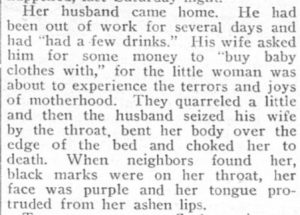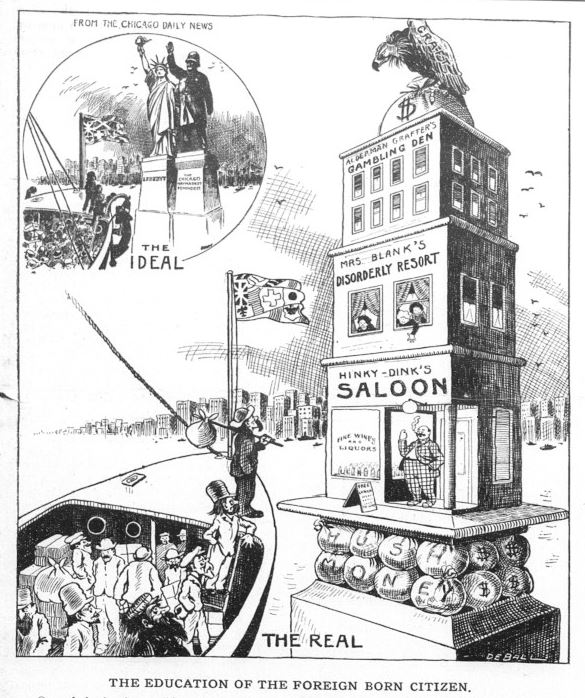From 1907 to 1911 the National Prohibitionist was the official organ of the Prohibition Party, an influential “third party” of the Progressive Era. The Progressive Era produced at least twenty “third” parties, and the Prohibition Party was among the more influential, certainly the most enduring. The newspaper was formed by the consolidation of multiple Prohibition Party papers, including the New York Defender, the Chicago Home Defender, and the Chicago New Voice. Its editor, William P.F. Ferguson, was a Methodist minister active in the prohibition movement as both an author and a public speaker. He had previously edited the New Voice and the Defender.
The core of the party’s platform was always an uncompromising opposition to the sale and consumption of alcoholic beverages, but over the party’s lifetime this core principle had different policy ramifications. In 1908, it resulted in a platform closely aligned with contemporary progressive thought, advocating the rights of labor, increased regulation of industry, a graduated income tax, conservation of natural resources, women’s suffrage, and child welfare. Women and children were considered the collateral damage of alcohol abuse, as intoxicated men were more likely to beat their wives and children. A factory worker or farmer could easily spend half the family income on alcohol if he was even an average drinker, and women’s inferior legal status limited their ability to act against abusive or spendthrift husbands. The National Prohibitionist reported extensively on families that had been ravaged by alcohol.

The paper also reported on, and helped to prosecute, the Prohibition Party’s feud with the Anti-Saloon League. Although both groups shared a common goal, the Anti-Saloon League opposed the formation of third parties, believing it more effective to act through the existing two-party system. The Anti-Saloon League allied itself primarily with the Republican Party, and this alliance drew voters away from the Prohibition Party. The Prohibition Party retaliated by attacking the Anti-Saloon League in the pages of the National Prohibitionist. In an attempt to discredit the Republican Party on the prohibition issue, the paper exposed Republican politicians supposedly in league with the “liquor interest.”

The paper’s period of publication was probably the party’s most progressive, but also a period during which its members began embracing the ideology of Americanization. Unassimilated immigrants were considered more vulnerable to the deleterious influence of the liquor interest, and the party struggled to gain traction with the “foreign born” population. The party did not codify Americanization as an actual policy solution until 1916, roughly concurrent with the foundering of first wave progressive consensus over the same issue. In the pages of the National Prohibitionist one finds an uneasy mixture of the progressive with the reactionary, and while the balance still tilted toward the progressive, the paper editorially viewed immigration as a social problem, albeit one susceptible to progressive solutions. The paper’s war on the “white slave trade” provides a good example of how sympathy for immigrants could easily turn into fear of immigration: the emotional appeals at the heart of much progressive discourse could justify the use of state power as a coercive instrument of assimilation, and the National Prohibitionist reveals a blurry line between progressive idealism and reactionary intolerance.
The National Prohibitionist was digitized with funding from the National Endowment for the Humanities, as part of the National Digital Newspaper Program.